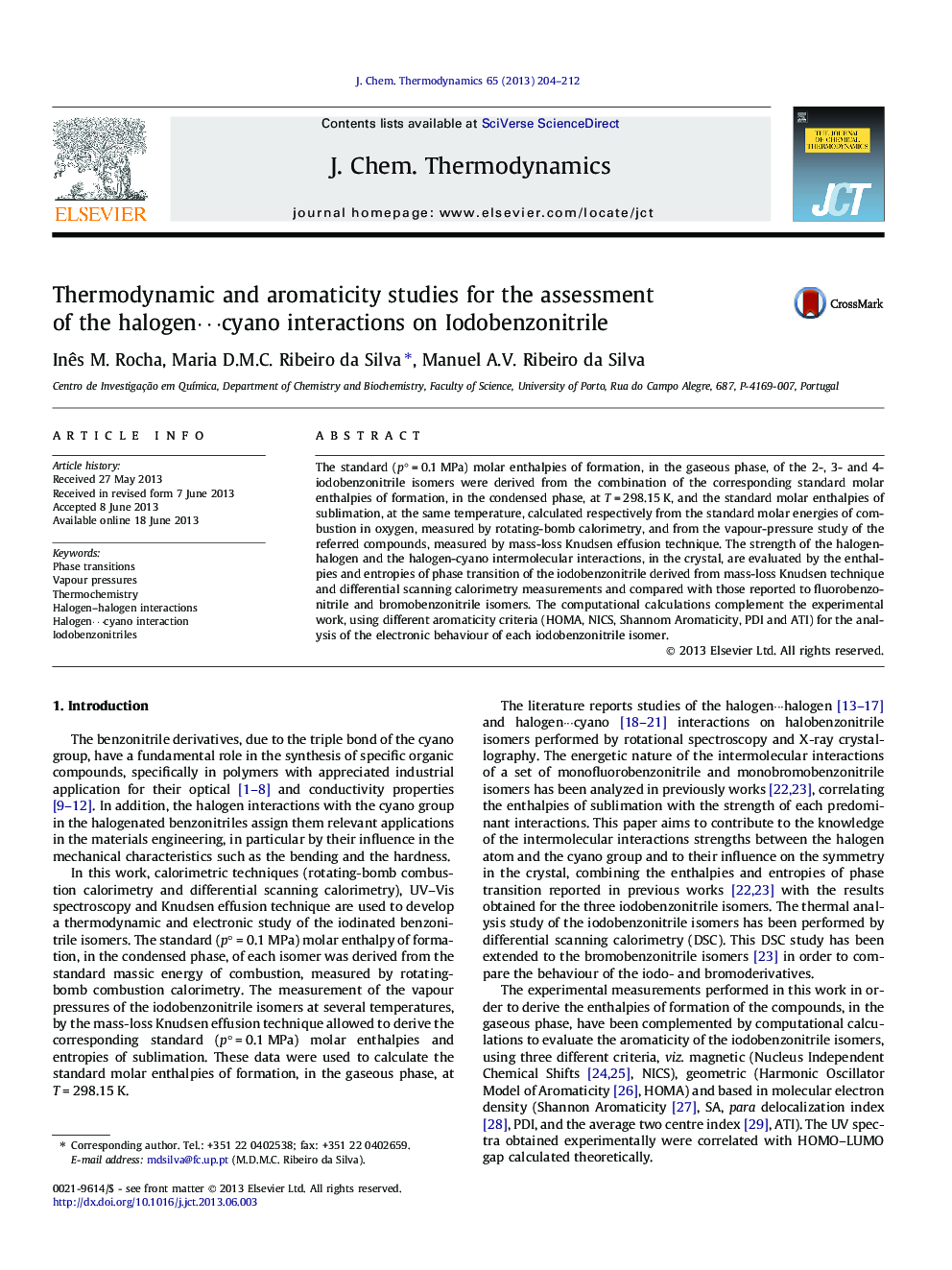| Article ID | Journal | Published Year | Pages | File Type |
|---|---|---|---|---|
| 216005 | The Journal of Chemical Thermodynamics | 2013 | 9 Pages |
•Vapour pressure study of the iodobenzonitrile isomers by Knudsen effusion technique.•Enthalpies of formation of the iodobenzonitrile isomers by combustion calorimetry.•NICS, HOMA, SA indices used as aromaticity criteria for iodobenzonitrile isomers.•QTAIMs properties, HOMO–LUMO gap, UV–Vis spectra of iodobenzonitriles.•Bromo and fluorobenzonitriles are taken as references for the aromaticity analysis.
The standard (p° = 0.1 MPa) molar enthalpies of formation, in the gaseous phase, of the 2-, 3- and 4-iodobenzonitrile isomers were derived from the combination of the corresponding standard molar enthalpies of formation, in the condensed phase, at T = 298.15 K, and the standard molar enthalpies of sublimation, at the same temperature, calculated respectively from the standard molar energies of combustion in oxygen, measured by rotating-bomb calorimetry, and from the vapour-pressure study of the referred compounds, measured by mass-loss Knudsen effusion technique. The strength of the halogen-halogen and the halogen-cyano intermolecular interactions, in the crystal, are evaluated by the enthalpies and entropies of phase transition of the iodobenzonitrile derived from mass-loss Knudsen technique and differential scanning calorimetry measurements and compared with those reported to fluorobenzonitrile and bromobenzonitrile isomers. The computational calculations complement the experimental work, using different aromaticity criteria (HOMA, NICS, Shannom Aromaticity, PDI and ATI) for the analysis of the electronic behaviour of each iodobenzonitrile isomer.
Graphical abstractFigure optionsDownload full-size imageDownload as PowerPoint slide
